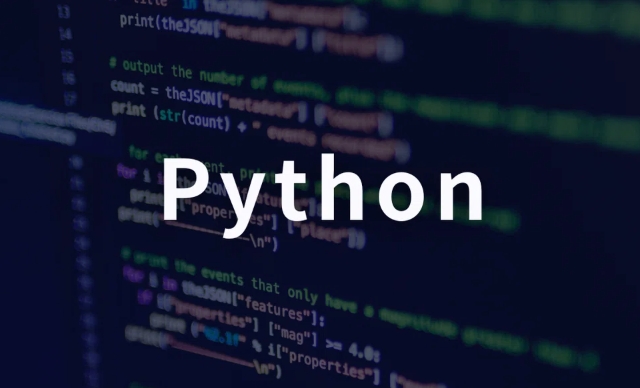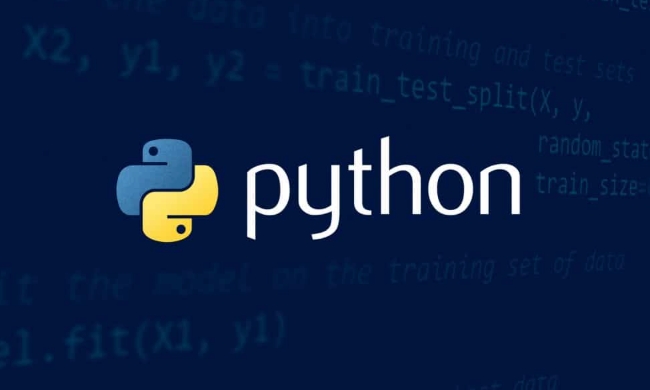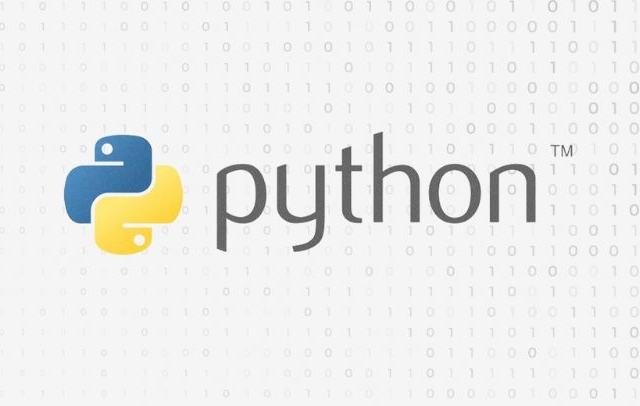How do you connect to a database in Python?
Jul 10, 2025 pm 01:44 PMTo connect to a database in Python, use the appropriate library for the database type. 1. For SQLite, use sqlite3 with connect() and manage with cursor and commit. 2. For MySQL, install mysql-connector-python and provide credentials in connect(). 3. For PostgreSQL, install psycopg2 and configure connection parameters including SSL if needed. 4. Optionally, use SQLAlchemy ORM for abstraction across databases by defining models and using create_engine(). Always close connections and avoid SQL injection by using parameterized queries.

Connecting to a database in Python is pretty straightforward once you know which type of database you're working with. Most common databases—like MySQL, PostgreSQL, SQLite, or MongoDB—have corresponding Python libraries that handle the connection process.

Here’s how to do it for a few popular ones.
Using SQLite with sqlite3
SQLite is built into Python, so no extra installation is needed. It's great for small apps or local development.

To connect:
import sqlite3
conn = sqlite3.connect('example.db')
cursor = conn.cursor()This creates a file-based database called example.db (or opens it if it already exists). You can then run SQL queries using the cursor object.

If you want to create a table:
cursor.execute('''CREATE TABLE IF NOT EXISTS users
(id INTEGER PRIMARY KEY, name TEXT, age INTEGER)''')
conn.commit()Don’t forget to close the connection when you’re done:
conn.close()
A couple things to watch out for:
- Always call
.commit()after making changes. - Use parameterized queries instead of string formatting to avoid SQL injection.
Connecting to MySQL with mysql-connector-python
For MySQL, you’ll need to install a package first:
pip install mysql-connector-python
Then connect like this:
import mysql.connector
conn = mysql.connector.connect(
host="localhost",
user="your_username",
password="your_password",
database="your_database"
)
cursor = conn.cursor()You can also run queries just like with SQLite:
cursor.execute("SELECT * FROM users")
results = cursor.fetchall()
for row in results:
print(row)Common issues:
- Make sure your MySQL server is running.
- Double-check credentials and permissions.
- Close the cursor and connection properly.
Working with PostgreSQL via psycopg2
PostgreSQL support comes through the psycopg2 library:
Install it first:
pip install psycopg2
Then connect:
import psycopg2
conn = psycopg2.connect(
dbname="your_db",
user="your_user",
password="your_pass",
host="localhost"
)
cursor = conn.cursor()You can execute queries the same way:
cursor.execute("SELECT version();")
print(cursor.fetchone())Some tips:
- If you're connecting over SSL, you may need to add
sslmode='require'or similar. - Like with MySQL, always remember to commit after writes.
Bonus: ORM Option with SQLAlchemy
If you're looking for something more flexible or abstracted, SQLAlchemy is a solid choice. It supports multiple backends and lets you define models instead of writing raw SQL.
Install it:
pip install sqlalchemy
Basic usage:
from sqlalchemy import create_engine
engine = create_engine("sqlite:///example.db")
connection = engine.connect()Or for PostgreSQL:
engine = create_engine("postgresql://user:password@localhost/dbname")It takes a bit more setup but gives you cleaner code and better portability across databases.
That’s basically how you connect to different databases in Python. Each method has its own use case—SQLite for simplicity, MySQL/PostgreSQL for more serious applications, and SQLAlchemy when you want an ORM layer.
The above is the detailed content of How do you connect to a database in Python?. For more information, please follow other related articles on the PHP Chinese website!

Hot AI Tools

Undress AI Tool
Undress images for free

Undresser.AI Undress
AI-powered app for creating realistic nude photos

AI Clothes Remover
Online AI tool for removing clothes from photos.

Clothoff.io
AI clothes remover

Video Face Swap
Swap faces in any video effortlessly with our completely free AI face swap tool!

Hot Article

Hot Tools

Notepad++7.3.1
Easy-to-use and free code editor

SublimeText3 Chinese version
Chinese version, very easy to use

Zend Studio 13.0.1
Powerful PHP integrated development environment

Dreamweaver CS6
Visual web development tools

SublimeText3 Mac version
God-level code editing software (SublimeText3)

Hot Topics
 What are python iterators?
Jul 08, 2025 am 02:56 AM
What are python iterators?
Jul 08, 2025 am 02:56 AM
InPython,iteratorsareobjectsthatallowloopingthroughcollectionsbyimplementing__iter__()and__next__().1)Iteratorsworkviatheiteratorprotocol,using__iter__()toreturntheiteratorand__next__()toretrievethenextitemuntilStopIterationisraised.2)Aniterable(like
 How to iterate over two lists at once Python
Jul 09, 2025 am 01:13 AM
How to iterate over two lists at once Python
Jul 09, 2025 am 01:13 AM
A common method to traverse two lists simultaneously in Python is to use the zip() function, which will pair multiple lists in order and be the shortest; if the list length is inconsistent, you can use itertools.zip_longest() to be the longest and fill in the missing values; combined with enumerate(), you can get the index at the same time. 1.zip() is concise and practical, suitable for paired data iteration; 2.zip_longest() can fill in the default value when dealing with inconsistent lengths; 3.enumerate(zip()) can obtain indexes during traversal, meeting the needs of a variety of complex scenarios.
 What is a forward reference in Python type hints for classes?
Jul 09, 2025 am 01:46 AM
What is a forward reference in Python type hints for classes?
Jul 09, 2025 am 01:46 AM
ForwardreferencesinPythonallowreferencingclassesthatarenotyetdefinedbyusingquotedtypenames.TheysolvetheissueofmutualclassreferenceslikeUserandProfilewhereoneclassisnotyetdefinedwhenreferenced.Byenclosingtheclassnameinquotes(e.g.,'Profile'),Pythondela
 Parsing XML data in Python
Jul 09, 2025 am 02:28 AM
Parsing XML data in Python
Jul 09, 2025 am 02:28 AM
Processing XML data is common and flexible in Python. The main methods are as follows: 1. Use xml.etree.ElementTree to quickly parse simple XML, suitable for data with clear structure and low hierarchy; 2. When encountering a namespace, you need to manually add prefixes, such as using a namespace dictionary for matching; 3. For complex XML, it is recommended to use a third-party library lxml with stronger functions, which supports advanced features such as XPath2.0, and can be installed and imported through pip. Selecting the right tool is the key. Built-in modules are available for small projects, and lxml is used for complex scenarios to improve efficiency.
 What is descriptor in python
Jul 09, 2025 am 02:17 AM
What is descriptor in python
Jul 09, 2025 am 02:17 AM
The descriptor protocol is a mechanism used in Python to control attribute access behavior. Its core answer lies in implementing one or more of the __get__(), __set__() and __delete__() methods. 1.__get__(self,instance,owner) is used to obtain attribute value; 2.__set__(self,instance,value) is used to set attribute value; 3.__delete__(self,instance) is used to delete attribute value. The actual uses of descriptors include data verification, delayed calculation of properties, property access logging, and implementation of functions such as property and classmethod. Descriptor and pr
 how to avoid long if else chains in python
Jul 09, 2025 am 01:03 AM
how to avoid long if else chains in python
Jul 09, 2025 am 01:03 AM
When multiple conditional judgments are encountered, the if-elif-else chain can be simplified through dictionary mapping, match-case syntax, policy mode, early return, etc. 1. Use dictionaries to map conditions to corresponding operations to improve scalability; 2. Python 3.10 can use match-case structure to enhance readability; 3. Complex logic can be abstracted into policy patterns or function mappings, separating the main logic and branch processing; 4. Reducing nesting levels by returning in advance, making the code more concise and clear. These methods effectively improve code maintenance and flexibility.
 Implementing multi-threading in Python
Jul 09, 2025 am 01:11 AM
Implementing multi-threading in Python
Jul 09, 2025 am 01:11 AM
Python multithreading is suitable for I/O-intensive tasks. 1. It is suitable for scenarios such as network requests, file reading and writing, user input waiting, etc., such as multi-threaded crawlers can save request waiting time; 2. It is not suitable for computing-intensive tasks such as image processing and mathematical operations, and cannot operate in parallel due to global interpreter lock (GIL). Implementation method: You can create and start threads through the threading module, and use join() to ensure that the main thread waits for the child thread to complete, and use Lock to avoid data conflicts, but it is not recommended to enable too many threads to avoid affecting performance. In addition, the ThreadPoolExecutor of the concurrent.futures module provides a simpler usage, supports automatic management of thread pools and asynchronous acquisition
 What is a class in Python?
Jul 09, 2025 am 01:13 AM
What is a class in Python?
Jul 09, 2025 am 01:13 AM
Classes in Python are blueprints for creating objects, which contain properties and methods. 1. An attribute is a variable belonging to a class or its instance, used to store data; 2. A method is a function defined in a class, describing the operations that an object can perform. By calling the class to create an object, for example, my_dog=Dog("Buddy"), Python will automatically call the constructor __init__init__init object. Reasons for using classes include code reusability, encapsulation, abstraction, and effective modeling of real-world entities. Classes help keep the code clear and maintainable when building complex systems.






